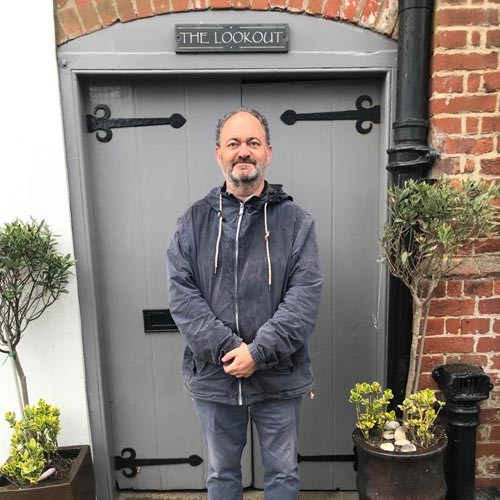Start Licensing’s Ian Downes takes a look back through his archives to focus on the ever adapting apparel category.
Circumstances dictate that my Lookout is again focused on my desk. I have dipped into my photo archive to focus on one of licensing’s biggest and most active categories: apparel. When I first started in licensing the apparel category was already one of significance and a major revenue generator. 28 years later it remains a very visible and crucial part of the licensing mix but it is one that has evolved, matured and diversified.
I recall most apparel deals being made up of pyjama sets, three pair sock packs, underwear and some daywear. In the main, the featured brands were children’s characters and design was quite simple generally a big character image and a slogan. Retailers like Woolworth’s and C&A were part of the retail mix. M&S was also a really big part of Copyright Promotions’ apparel business and I remember that there was a parallel licensing programme in operation for M&S such was its interest in licensing and it had a whole army of ‘M&S suppliers’.
At the time I co-managed Copyright Promotions’ publishing business. Each Monday we had a sales meeting in the boardroom at Metropolis House in Percy Street. There were about 15 of us in the sales team. The meetings were managed by our boss Angela Farrugia. We had to update her and the team on the deals we had done the previous week. Our apparel team made up of three people used to sit immediately to the right of Angela and reel off dozens of deals from three pair packs of pants to plenty of PJ sets. Myself and my publishing colleague sat to the left of Angela in the full knowledge that time would run out before it was our turn to present our ‘deals of the week’. Generally we had one or none so our strategy was a sensible one!
These days I don’t think I would be so worried. It seems to me the apparel category has lost none of its importance, but has evolved in lots of ways including volume of individual deals, the retail landscape and also the component parts of the market in terms of brands, manufacturers and target consumers.
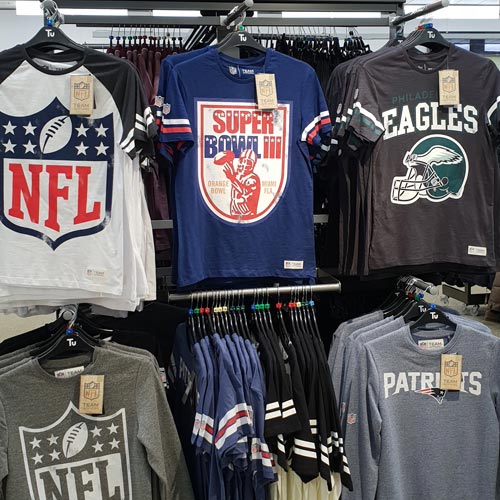
Sports and music brands are now part of the apparel mix. Both have always been on licensing rosters but in terms of apparel they seem to have made strong progress over recent years.
A good example of this in action was a range of NFL apparel that I saw in Sainsbury’s. This was merchandised as a full collection with a well presented end cap. This was also an indication that NFL has become well established in UK pop culture and that consumers have access to many more brands these days. Brands like NFL also crossover as lifestyle brands and you see them feature in the ‘collab’ space with partnerships with well established brands in categories like footwear and headwear. It is a sports brand, but also a fashion brand now.
Of course ‘collabs’ generally are a big feature in the licensed apparel market these days. There seems to a new one every week and I have to say as I get older I find some of them harder to fathom, but they certainly produce some great products and designs.
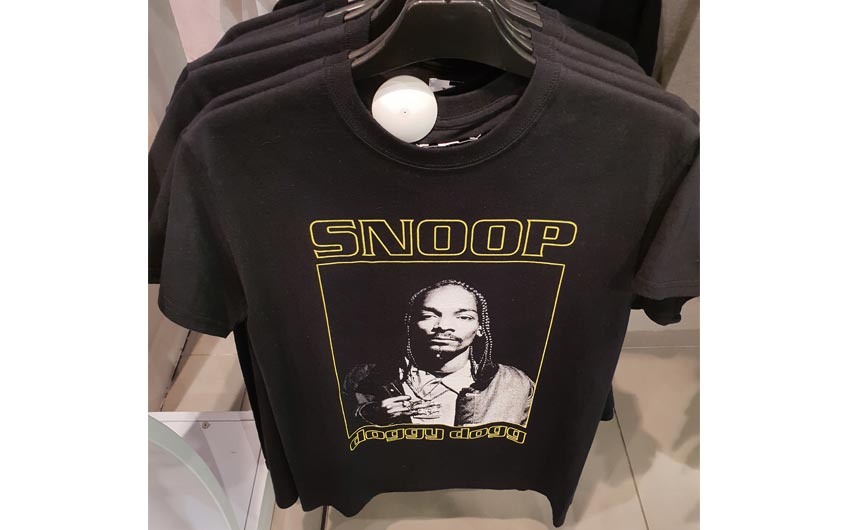
Music bands and artists are now a core part of the apparel offer. Band brands like The Beatles, Pink Floyd and The Rolling Stones are well established in the apparel market. In the case of The Beatles this ranges from the fashion retailers through to tourist shops especially in Liverpool. In the latter category, companies like Spike Leisurewear have become very efficient at finding new ways and places to sell apparel. Music-wise a whole range of bands and artists feature these days and it seems to be a popular theme for retailers.
More outlets seem to be selling licensed apparel, particularly when you include online sellers. It is hard to say if volume has grown but reach seems to have increased. Obviously this has to be heavily caveated by the point that we don’t know what the retail market on and offline will look like in a few months time.
Online sellers like TruffleShuffle, ASOS and BooHoo have opened up new opportunities for licensing and helped with consumer engagement. It is always interesting to see what the sector is doing brand-wise and design wise. Ideas seem to flow from online to high street these days.
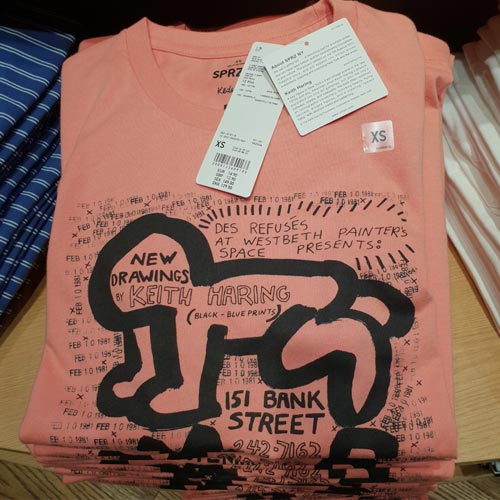
I have always been impressed by what Uniqlo chooses to do licensing wise. It has dipped into manga and anime to create t-shirt collections and also feature brands such as Disney.
But my eye was particularly drawn to its Keith Haring range which I seem to recall was part of a wider collection of street and pop artists. Uniqlo, like a number of apparel retailers, takes a multi territory view on licensing and this can present a challenge to licensors. Uniqlo also has its own design style.
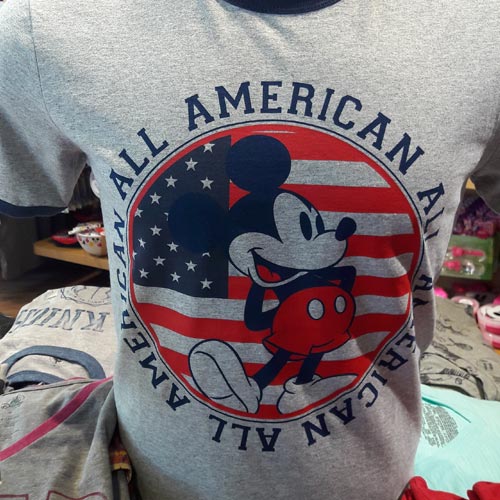
It is more common today to see the same characters and brands popping up in multiple retailers at the same time. But they are differentiated by design.
Licensors and agents (and of course licensees) have got much better at the creative side of licensing. Specialist design agencies help supplement things with trend driven style guides, mood boards and refreshes. We are long way away from the days where you had two or three character images from which to build a licensed apparel range.
Design is a key to success these days and also a key to growing an apparel business. A good example of this is how Disney works with its classic characters like Mickey Mouse. I have seen numerous alliterations of Mickey design-wise which cover all ages and all kinds of retailers. This shows what can be achieved with an investment in design and recognition that in apparel one size definitely doesn’t fit all.
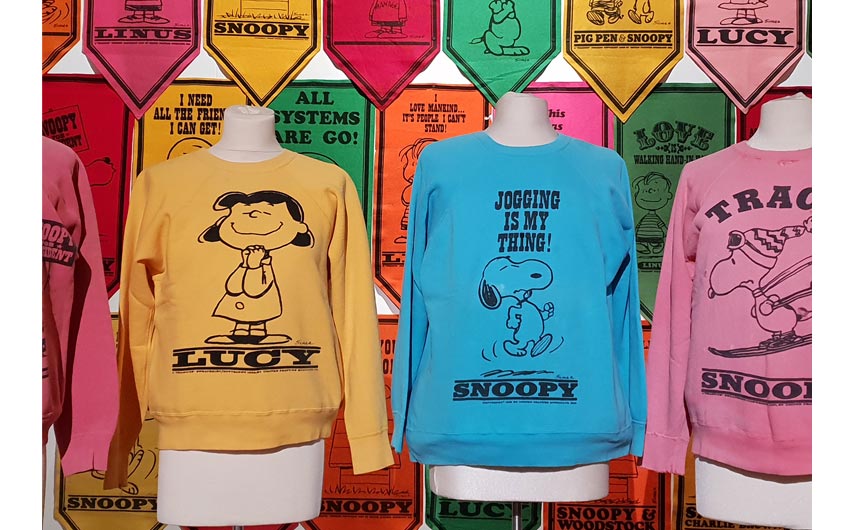
Some of the best designs I recall seeing recently were at the Snoopy Exhibition held at Somerset House. I imagine these were bought in from a licensee, but they were great examples of how a classic character can be refreshed through design and a new approach to colour. It is also a good example of how activities such as exhibitions can help fire up a licensing programme.
I know from my work with Aardman how important its live events and exhibition business has been to the development of its brands. Again I write this in the knowledge that this is a business sector that will take some time to recover from current events. That said, we should be mindful that licensing is not just about a single media platform or route to market anymore.
It has also been interesting to see how museums such as the Natural History Museum and the V&A have used the apparel category to further their reach. This has included partnerships with the likes of Oasis, but also a commitment to contemporary design and moving their licensed apparel away from a souvenir style t-shirt to a well thought through licensed apparel offer.
Another couple of licensees and licensed ranges that caught my eye are Roy Lowe and SuperSocks. Back in the Copyright Promotions days three pair packs of socks were a staple of all licensing programmes. There were multiple deals and samples aplenty. But design was quite basic and formulaic. These days the sock category is one that has focused on design and delivery.
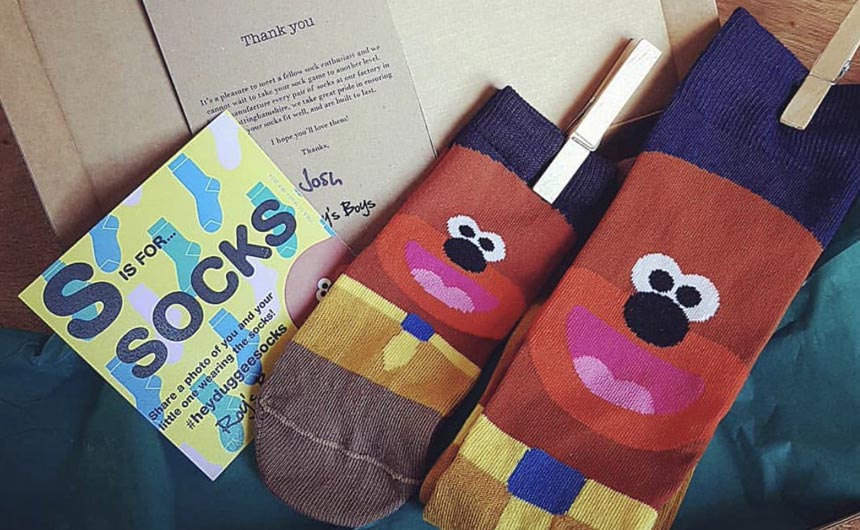
A good example is Roy Lowe’s Hey Duggee sock range. It has created adult and child gift sets and focused on new opportunities around gifting. This is a good example of a licensee trying to kick on in a category and investigate new ways of selling. Again design is a key to success here.
SuperSocks is a great example of a new generation of licensees that are relying on online selling coupled with social media to sell. It is producing personalised socks featuring characters like Wallace & Gromit. The designs are fresh and contemporary, while it is engaging with consumers in a contemporary way.
Overall I would say the biggest change I have seen in the apparel market in licensing is in design. The quality of design work in general terms is really high. Licensees work hard to be on trend, contemporary and for licensed ranges to stand comparison with the wider market. It is hoped this standard and movement is maintained. It would be disappointing to see apparel design slip back to label slapping. Apparel is one of the categories I love ‘Looking Out’ at and it is always good to see what new design work is out there.
It seems a long time ago from my days in Percy Street when I tried to avoid a group analysis of my sales performance. Publishing was always so much harder than apparel!
As always at the moment I am sending everyone my best wishes and – unlike me in Copyright Promotions’ sales meetings – it is time to speak up and talk. Keep in touch.
Ian Downes runs Start Licensing, an independent brand licensing agency. His Twitter handle is @startlicensing – he would welcome your suggestions for what to look out for.

















